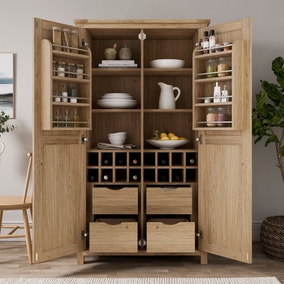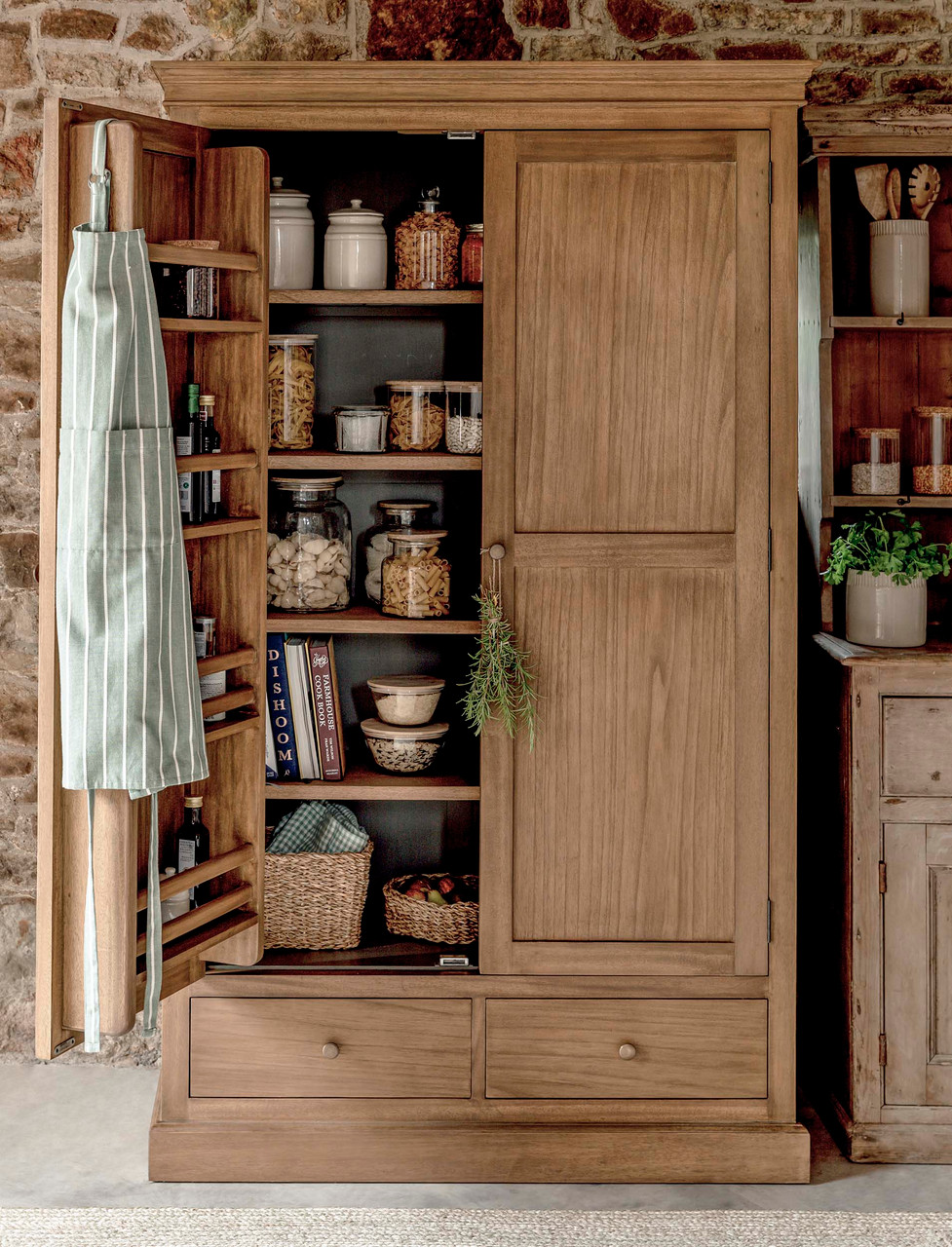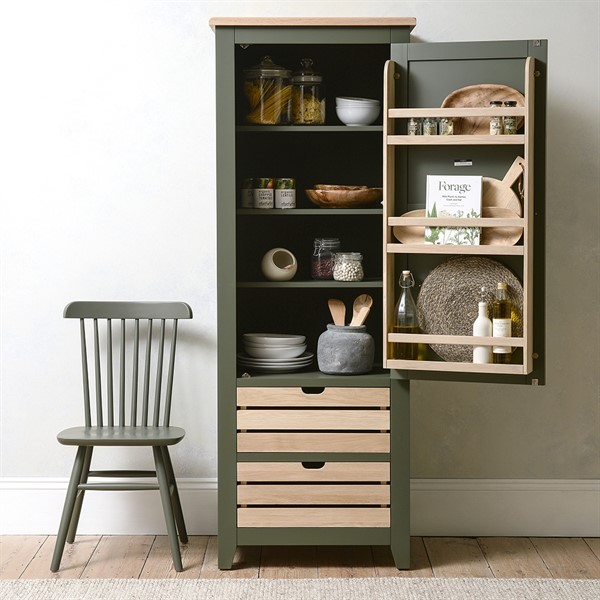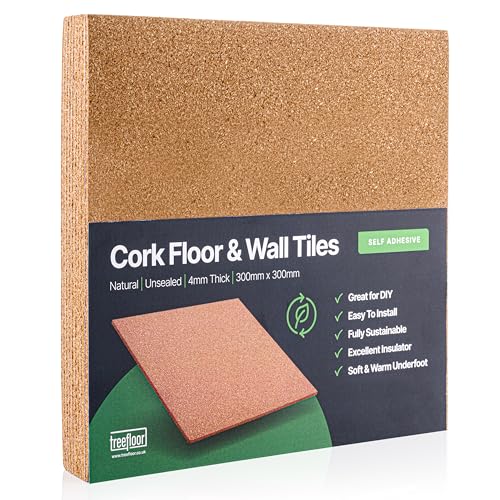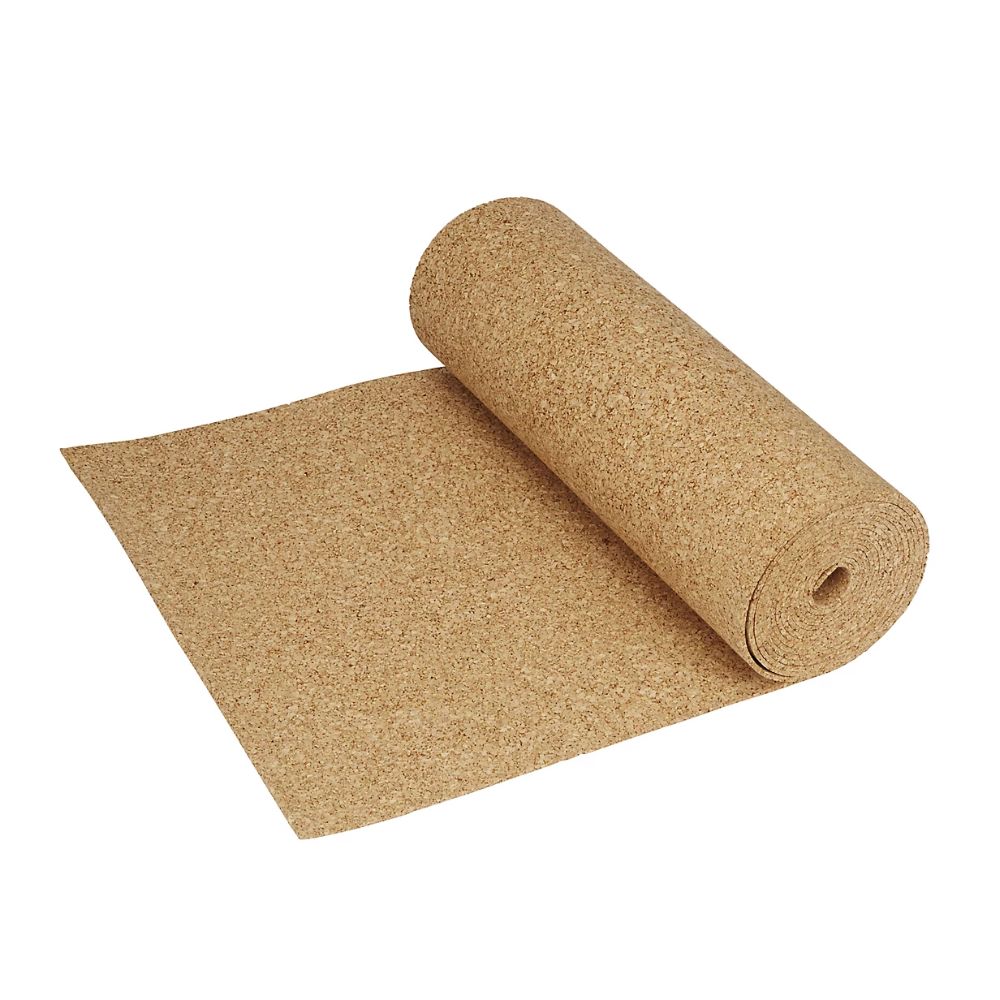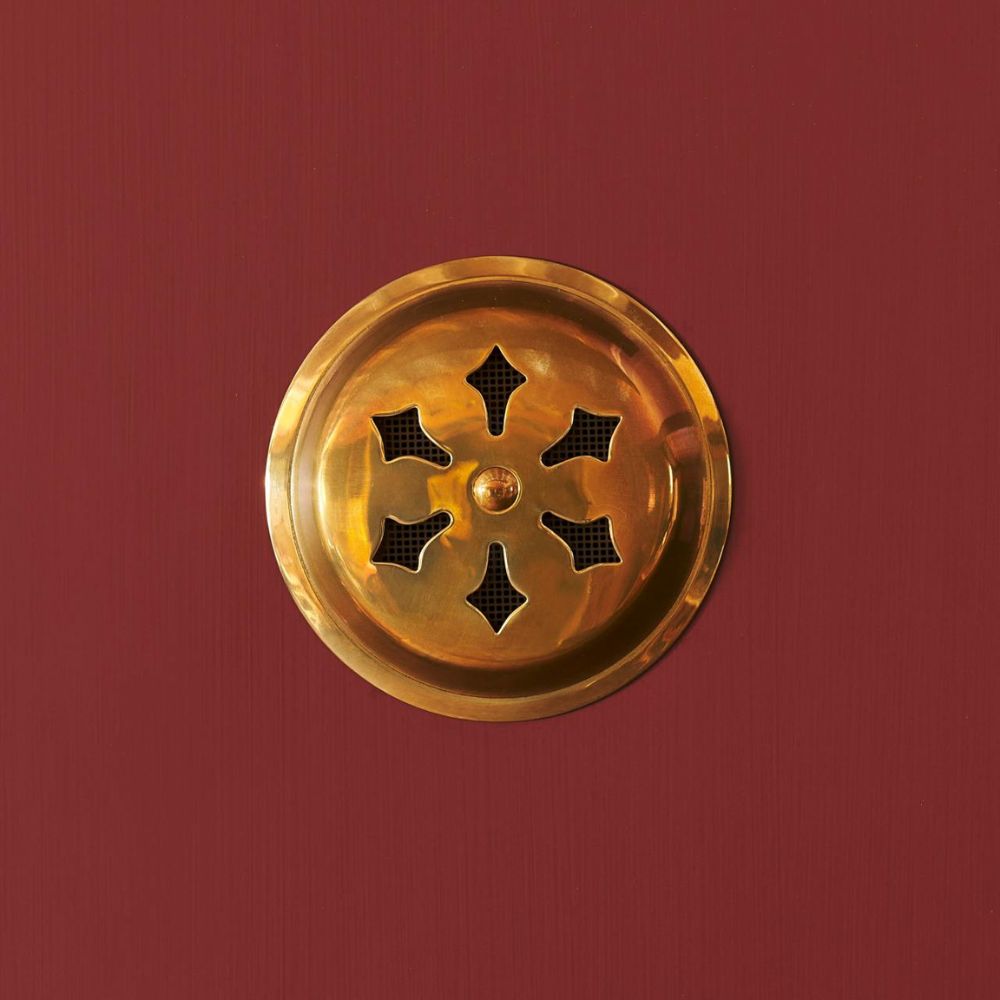How to keep a pantry cool year-round and say goodbye to spoiled food
From shelf placement to managing humidity levels, we take a look at the dos and don’ts of keeping your pantry cool
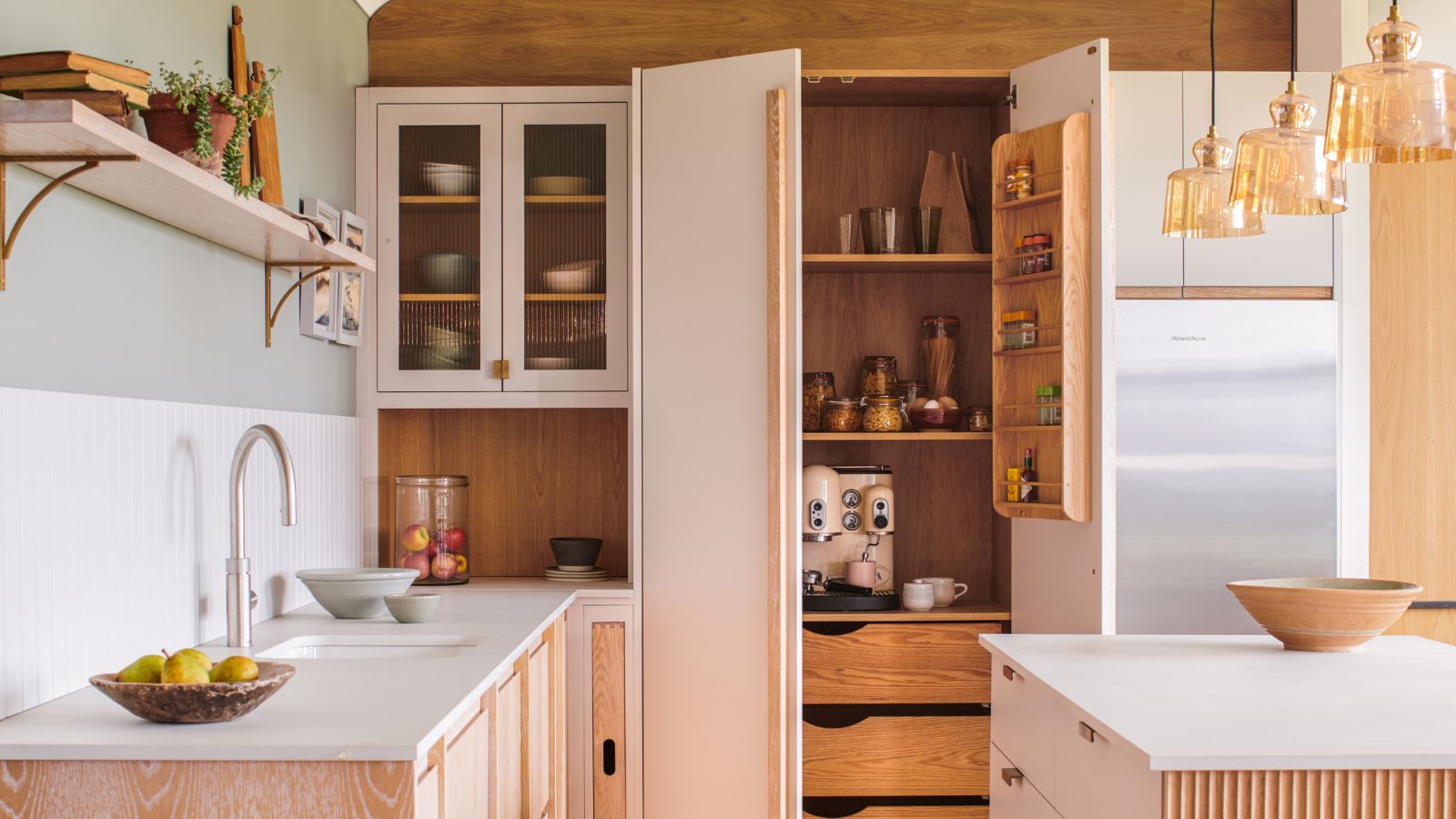
The temperature of your kitchen pantry can make or break your food storage. When it’s too warm, perishables can spoil quickly, dried goods lose their flavour, and unpleasant odours can start to take hold. Thankfully, a few simple adjustments can keep your ingredients fresher for longer and ensure your pantry keeps working hard for your home.
If your pantry is running warm, there are likely a few common culprits. Does it receive too much sunlight? Are nearby appliances radiating heat? Simple updates, like improving airflow, rethinking shelf placement, or adding insulation, can work wonders in managing the temperature of these spaces and keeping them cool and dry all four seasons of the year.
Why does temperature matter in a pantry?
"A pantry is such an important part of overall kitchen planning and design whether this is incorporated within the run of kitchen cabinets of a separate room which needs to be designed in fitted out accordingly for food storage," explains Jayne Everett, creative director of Naked Kitchens. But the practicalities of these units are just as important as the aesthetics. A pantry that hasn’t been designed to stay cool and dry won’t perform its essential function: keeping food fresh and organised.

In 2000, following a successful career in finance, Jayne and her husband left London and settled in Norfolk to raise their young family. In 2005, her passion for design led to the couple founding Naked Kitchens. As creative director, Jayne now oversees the design of new showrooms and kitchen styles.
According to the UK Food Standards Agency (FSA), non-perishable pantry staples should be stored in a cool, dry place, away from direct sunlight and heat sources, while perishable foods requiring refrigeration should be kept at or below 8°C. Food Standards Scotland (FSS) supports this guidance, emphasising that pantries should remain cool and dry, and cautioning that "some types of food might also need to be kept in the fridge once you’ve opened them."
To keep your meals as fresh as possible, aim to maintain an internal pantry or larder temperature between 10°C and 21°C, with good airflow and ventilation to regulate humidity.
Reasons Why Your Pantry is Running Warm
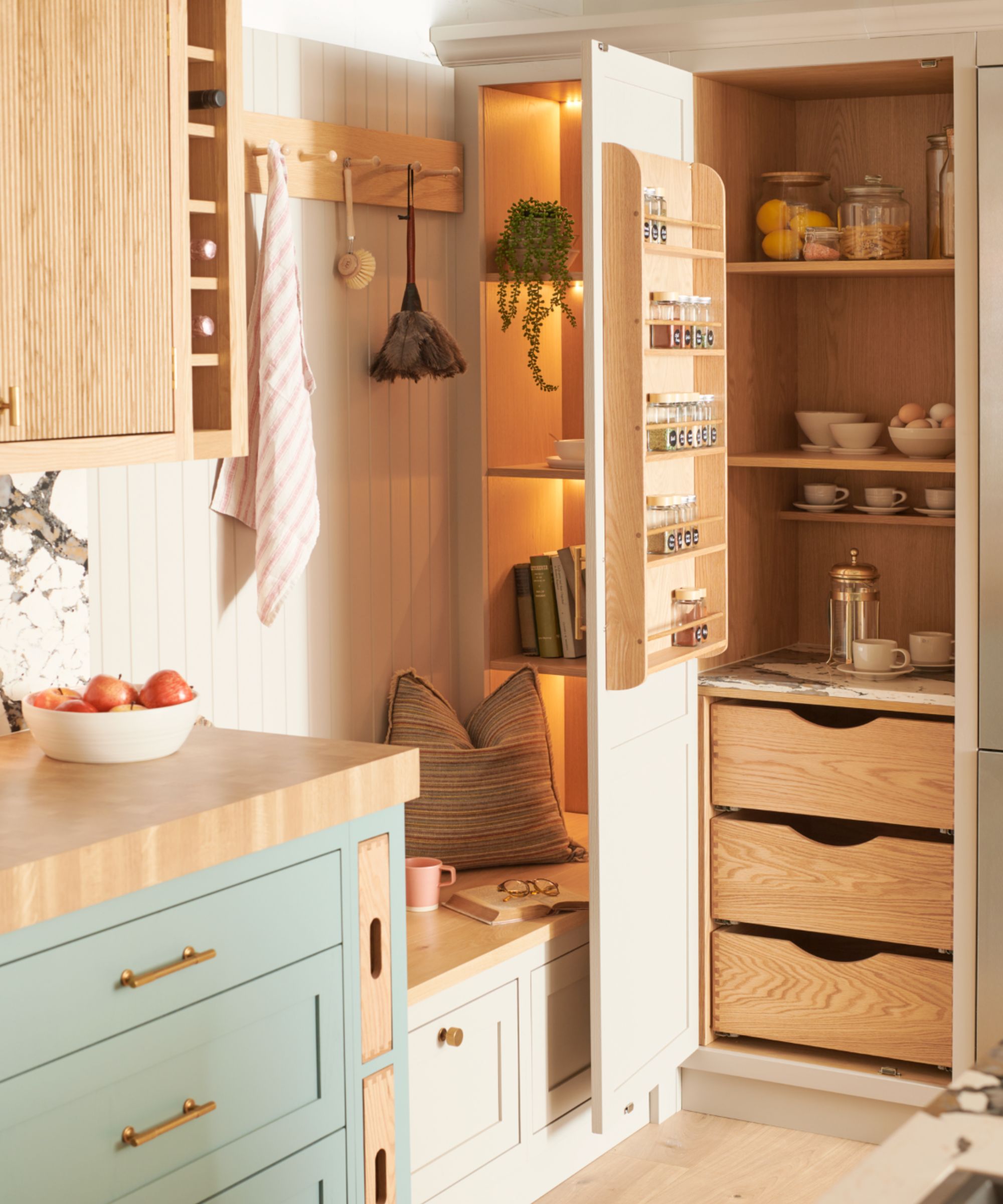
If your pantry is starting to feel more like a home sauna, it’s worth considering a few common factors that could be causing it to run warm:
- It's too close to heat sources: Pantries located next to ovens, dishwashers, or radiators may absorb the excess heat generated by these appliances. Even a fridge can radiate a surprising amount of warmth if there isn’t sufficient ventilation around it.
- It gets too much direct sunlight: Kitchens with skylights or large windows that let in strong sunlight can quickly increase the temperature inside your pantry. This is especially problematic for walk-in pantries with glass-fronted doors or large windows.
- You have poor ventilation: Poor airflow and kitchen ventilation can leave your pantry feeling stuffy and damp, creating the perfect storm of heat and humidity that’s far from ideal for storing food.
- There is insufficient insulation: Thin walls or doors can allow external heat to seep into your pantry, making it difficult to maintain a consistent, cool temperature inside.
- You keep overcrowding your shelves: Cramming items into every available inch of storage space or tightly stacking containers can reduce airflow in your pantry and prevent excess heat from dissipating.
How to keep your pantry cool
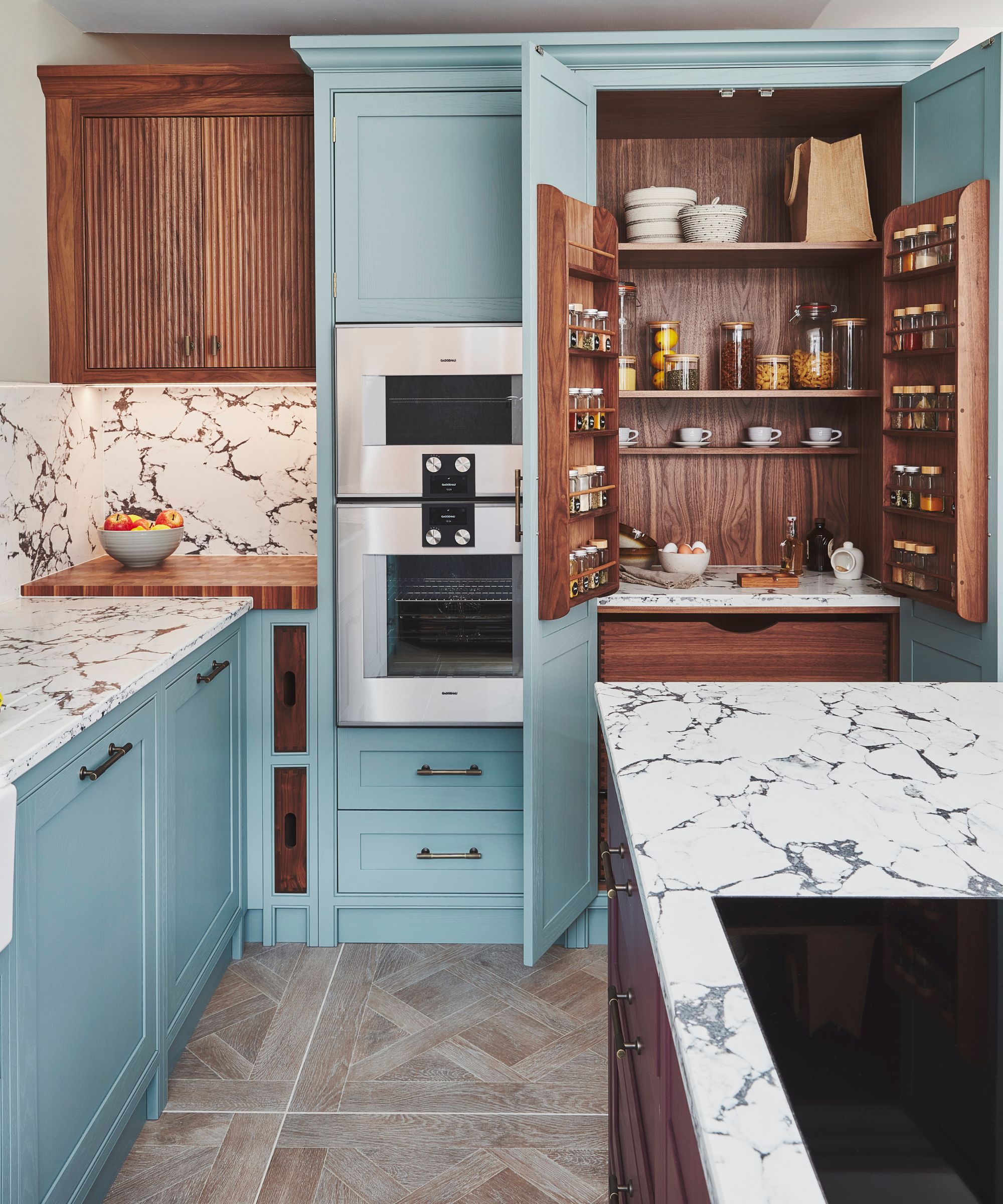
Thankfully, there are plenty of ways to bring the temperature in your pantry back down and keep it consistent year-round. Here are a few expert-approved ideas:
Bring your dream home to life with expert advice, how to guides and design inspiration. Sign up for our newsletter and get two free tickets to a Homebuilding & Renovating Show near you.
1. Give some thought to materials
When designing a pantry or larder, the materials you choose can make all the difference in keeping the space cool and dry. Many ready-to-install pantries are made from wood, and for good reason – wooden shelving is durable, naturally insulating, and, if finished well, resists heat absorption. For an extra touch, opt for slatted wood shelves to encourage airflow and prevent heat build-up.
If you’re looking to elevate your pantry’s cooling potential, consider incorporating marble or quartz. "Marble and quartz are naturally cool materials, so these are great to use for the shelf of a pantry to keep everything cool," suggests Jayne Everett. These sleek, hardwearing materials not only help regulate temperature but add a timeless look to your kitchen design.
"Adding stone or slate shelving to your pantry is another great way to keep your groceries and dry goods cool while also regulating the surrounding temperature," says Al Bruce, Founder of Olive & Barr. "Slate is naturally cooler than quartz or marble, hence why it is the more traditional choice, especially for larders."
For the doors, solid timber or insulated materials are excellent choices for blocking external heat. To reflect heat away from the pantry, you could also paint the exterior in a light, neutral shade – especially if this matches your painted kitchen cabinets.

Al Bruce is an experienced professional in the handmade kitchen industry, with a career spanning 25 years. In 2018, he established his own Shaker kitchen company, combining his technical skills and business acumen to deliver high-quality, bespoke kitchen designs
2. Consider the location of your pantry
"If you are putting a pantry next to windows or appliances, they will receive more heat, so avoid placing them in that area," cautions Jared Robinson, owner of custom cabinet makers Robinson Trim. The same applies when selecting a spot for walk-in pantries. Avoid placing them near windows or external walls that might warm up in summer – unless they are properly insulated, as this is asking for trouble.
Built-in pantries are best positioned on a north-facing wall or in a part of the kitchen that gets minimal sunlight. If you’re working with a freestanding unit, try to place it away from heat-generating appliances like fridges or dishwashers.
"It's also a good idea to keep the pantry away from the busy cooking area so as not to add more to this zone," adds Jayne Everett. "If using a pantry cupboard, it is always great to have the door hung to open away from the cooking area too."
Shop freestanding pantry units
3. Plan the internal layout
A well-thought-out internal layout can also help keep your pantry cool. You should try to avoid overcrowding shelves and make sure you leave space between items to allow for better airflow.
"It’s always important to think through what is being stored within a larder so that the shelf space is carefully planned to allow everything to be neatly stored," explains Jayne Everett. Place heat-sensitive items like oils or chocolate on lower shelves, where temperatures are naturally cooler, and incorporate pull-out drawers or shallow shelves into your kitchen storage to ensure air can circulate freely, keeping heat and humidity to a minimum.
"You could also make vegetable drawers that have vented fronts," suggests Jared Robinson. "If you put mesh screen fronts on their faces, you can see the produce in there while providing ventilation."
4. Insulate your pantry walls
When you think of insulating your home you probably think about keeping it warm. But when it comes to your pantry or larder, insulation is just as important for keeping these spaces cool and stable. Without it, external heat can seep in, making it harder to maintain the ideal environment for food.
If you’re working with an existing pantry, there are a few easy DIY upgrades to try. Applying self-adhesive insulating film to the inside of pantry doors is a quick fix that can noticeably improve the internal temperature. Alternatively, cork tiles are another straightforward choice. As a natural insulator, cork keeps the heat out while adding a unique, textured finish to your pantry walls.
Of course, when adding a layer of insulation, this should always be paired with proper pantry ventilation. This can be achieved by incorporating mesh inserts into your pantry doors to allow air to circulate freely, or with specially made door vents. Side panels are another option for discreetly improving ventilation without compromising your overall kitchen design.
5. Monitor the temperature with smart devices
It's much easier to keep track of your pantry’s temperature and humidity levels with the help of smart kitchen devices. Digital thermometers and hygrometers are able to provide real-time readings, allowing you to make adjustments to your kitchen storage when needed. Some devices even connect to apps, giving you alerts if conditions in your pantry become less than ideal.
Not all kitchens are large enough to incorporate a pantry. If your space is on the small side, consider storing your essentials in a designated kitchen cupboard or decant your dry food into stylish, airtight containers and take a look at these clever kitchen shelving ideas.

Gabriella is an interiors journalist and has a wealth of experience creating interiors and renovation content. She was Homebuilding & Renovating's former Assistant Editor as well as the former Head of Solved at sister brand Homes & Gardens, where she wrote and edited content addressing key renovation, DIY and interior questions.
She’s spent the past decade crafting copy for interiors publications, award-winning architects, and leading UK homeware brands. She also served as the Content Manager for the ethical homeware brand Nkuku.
Gabriella is a DIY enthusiast and a lover of all things interior design. She has a particular passion for historic buildings and listed properties, and she is currently in the process of renovating a Grade II-listed Victorian coach house in the West Country.
